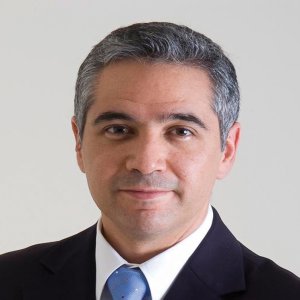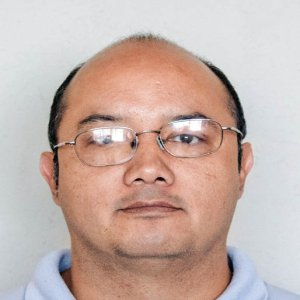Small State Dreams of Big Growth

STORY INLINE POST
Q: How has Queretaro forged its close relationship with the automotive industry over the years?
A: The automotive industry is the main contributor to our economy, making up almost 10% of the total GDP, onethird of our manufacturing GDP, and over 10% of our total employment. This is not a new situation, although many recent investments have drawn more attention to the Bajio region as a whole. Queretaro has been the host to Tier 1 suppliers for a long time, which has kept us close to many big OEMs. Companies like Grupo KUO and Tremec have been here for a long time, while US and Asian companies have been new arrivals. We do not have any light vehicle OEMs in the state, although we do have heavy vehicle OEMs such as Scania and MAN Truck & Bus. Alongside these, we have 62 Tier 1 suppliers and over 250 Tier 2 suppliers.
Q: Do you think that not having a light vehicle OEM hurts Queretaro’s international perception as an investment destination?
A: We are very well known at the Tier 1 level for our worldclass production sites. Not having an OEM obviously plays a part, but when companies do their investigations in Mexico, they are pleasantly surprised by the strengths of our state. That is actually a good thing since it means that when companies choose to invest in Queretaro, they are doing so based on a strong business case built on solid market research. We would like to have an OEM but it is not necessarily something that we are seeking at all costs. We are consistently in the top three choices when OEMs are looking for a plant location.
Q: What are the main benefits of investing in Queretaro for automotive industry companies?
A: The human resources and the high levels of R&D taking place here are Queretaro’s main strengths. We have historically been better known internationally for the aerospace sector, although the automotive sector represents a bigger proportion of our economy. Productivity in Queretaro is high, and the labor environment is very strong. We are a very stable state with good union relations and without a history of strikes. Even in tough times, our companies have implemented good productivity programs, allowing us to remain productive in the depths of the 2008 financial crisis. We learnt a lot of lessons during the crisis, leading us to diversify our economy further by investing in other sectors such as aerospace and biotech. This actually helped us to increase competitiveness within the automotive industry too, as we obtained better research centers, better institutions, and a more competitive industrial environment.
Q: What sort of incentives does the Queretaro government offer to companies looking to establish an industrial base here?
A: Being one of the smallest states in Mexico means that we have certain limitations. We do not have unlimited land for development, and we have just one industrial corridor that goes from Queretaro City to the San Juan del Rio area. We are trying to expand our industrial corridor as much as we can, but we have natural barriers in the Sierra Gorda area to the north. Our budget is also not unlimited and we have modest finances in place. This has led to us developing a strategy that focuses on bringing the right companies to Queretaro. With that in mind, we are focusing on developing suppliers and supporting synergies between local universities and the private sector. We do not see incentives as a sustainable strategy to attract FDI, therefore we do not offer land incentives or tax exemptions. Instead, collected taxes are reinvested in initiatives that can help the competitiveness of companies located here.
Q: How extensively are you working to develop your local supplier base?
A: We have a strong program to develop local suppliers which contains many phases. Large companies based here, such as Tremec, are opening their doors to local companies so that these can understand what big companies do, what kind of parts they are using and buying, at what price, and at what volume. In the last four years alone, we have identified opportunities for local automotive suppliers valued at US$3 billion. Thanks to the commitment and trust that large automotive firms have placed in the government, more and more opportunities are arising for local suppliers. Most of the issues that these suppliers face have to do with materials availability and their technological capacity. We have therefore established a trust fund which enables us to provide low-interest loans and make technology available to these companies. To be a successful supplier, you have to take the leap from being a small company to a solid medium-sized one and there is no easy way to do that. We help as much as we can. Right now, one of the main challenges is the pace of growth in the Bajio. There have been major investments from Japanese companies, which came in very quickly. We need to make sure that the right conditions are in place to attract such companies. This includes the expansion of our industrial corridor by pushing investment to some of our smaller municipalities, and to the desert area of the state. Making that shift successfully means that we have to work closely with industrial developers. Most of Mexico’s industrial parks are private, so we aim to show developers the possibilities of developing world-class parks in Queretaro.
Q: Do you see the relationship between northern and central states as one of cooperation or competition?
A: We compete but we also compliment each other. The difference between Queretaro and some northern states is the diversity of our companies. The northern states have more companies from the US, whilst Queretaro has a strong contingent of European and Asian companies. Many companies sending their employees to Mexico are looking for a nice city that offers a high standard of living for their executives, and we can offer that. We also work closely together with northern states. Right now, we are working on a project with Nuevo Leon and Guanajuato, along with JICA, the Japanese agency for international cooperation.
Q: To what extent is the development of the right engineering workforce the responsibility of the government?
A: The task of establishing the right workforce to fuel economic growth is a joint effort between the public and private sectors. Ensuring that the right types of graduates are available is crucial, especially in a state with a very diversified industrial base. We work together in different areas as this task cannot be achieved by either side alone. Students need to be trained in the right way, and graduates need to be given the right jobs, then trained and retained in the most effective way possible. For example, when a company establishes itself here and presents very specific human capital needs, we work together with local institutions to train students exactly in line with those needs. The Queretaro government largely funds the universities that specialize in doing this, but we also seek support from the federal government. Engineering is becoming a much more attractive qualification. A few years ago, we noticed that the level of engineers graduating in Queretaro was excellent but that we could not necessarily make the right opportunities available to them. We therefore started working with companies to offer opportunities for engineering graduates in a variety of segments. General Electric has an R&D center here, as does Ericsson, which elevates the entire industrial segment. Since we are a small state with just two metropolitan areas and one industrial corridor, our industrial community is very tightly knit. As a local government, our doors are wide open and we enjoy regular close contact with the representatives of all of the major companies operating here. We also work very closely with the Ministry of Economy, CONACYT and INADEM to help provide the best environment possible for our companies.
Q: What are Queretaro’s expectations for growth over the coming years?
A: Right now, our expectations are very high. In recent years, our GDP growth rate has hovered around 6%, which is well above the national level. Our job growth is also well above the national level. The average income in the state has also increased from MX$270 (US$20) per day to MX$310 (US$24) per day, placing us third in the country. This is because we are growing very fast and we have been focusing on adding value. The next aspect in need of improvement is the concentration of this growth. Right now, our growth is focused in metropolitan areas, so we want it to have a broader reach. We need to not only grow the number of jobs in areas beyond the metropolitan center, but also increase the quality of jobs available, which poses a huge challenge. When we think about small municipalities, we automatically think about low-skilled manual jobs, but we want to rapidly make the shift to more high-technology jobs.



















